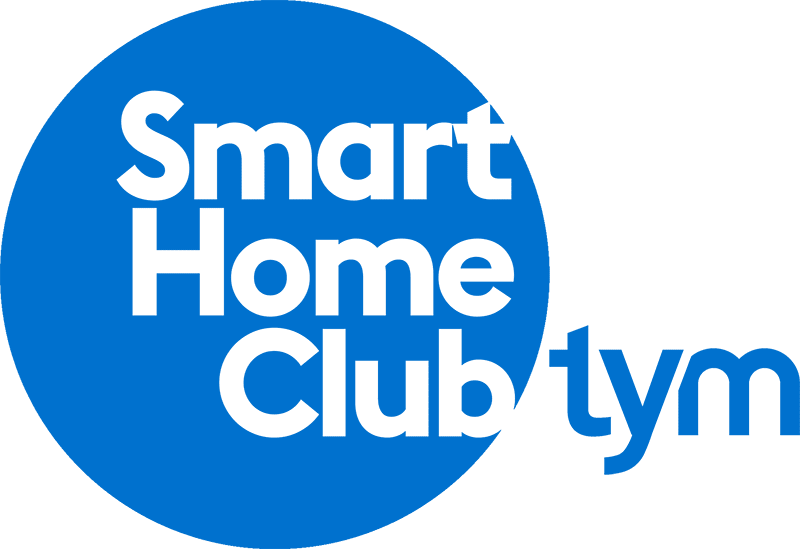If you’re thinking about buying a Smart Home, odds are you have a friend or relative whose told you their system is buggy and unreliable. You’re probably wondering if that’s true? Well I have good news, and bad news.
The bad news first. Yes, a poorly designed system, and worse yet, a poorly installed system can be buggy and unreliable. Now for the good news, the headaches are avoidable if you design the system right, and install it correctly.
I’ve put together a list of the top 7 problems and the solutions we see with smart homes and audio/video systems. But before I go into the list, I want to be totally honest with you. We’re talking about technology here. Have you ever had to restart your iPhone? Your Android? What about your laptop? Your home network? Sure you have. We all have. We expect our technology to work 99% of the time. And we understand that once in a while, for whatever reason, the tech will get hung up. We just power cycle it. No big deal right?
It’s the same with smart home and audio/video systems. There’s some basic maintenance involved with any system. Once in a while you need to reboot your Savant Host, or your Control4 controller. Or maybe a power outage will leave an amplifier powered off. No big deal. Just press the power button, and you’ll be back up and running.
Anyone who tells you there are no problems with a smart home system isn’t telling you the truth, or they’re lying to themselves. No system is 100% perfect all the time. But… they can be reliable enough to be very enjoyable, and very worth having. So with that in mind, lets look at these 7 problems and solutions.
1. Your Home Network
You need a solid home network. This means you need a decent service provider, and better than average speeds. We try to avoid satellite internet. That may change in the future, but our experience thus far just hasn’t been great. Over the wire service providers are preferred. You also want reliable hardware. This usually means an upgraded modem (not the one your service provider provides in the package), an upgraded wireless router, and enough wireless hotspots to adequately cover your home.
When we design a system, we require hotspots with a ‘controller.’ This means that as you move around your home, the ‘controller’ will monitor where your mobile device is, and make sure it’s pointing to the best wireless hotspot for optimum coverage. If you’re trying to stream music, control TV’s, etc via the network, you can’t afford to have your mobile devices stuck in no man’s land.
2. TV’s
After the network, this is our number one source of headaches in a home. There are two types of commands you can send to a TV: a ‘discrete input;’ and a ‘toggle.’ A discrete Input means you send a very specific command. An example of this might be ‘TV turn on, and turn to input HDMI 3.’ A toggle on the other hand is just like it sounds. You can’t send the TV any specific commands. All you can do is toggle the state of the TV.
If you’re trying to run scenes like turning the TV on to ESPN, or powering all the TVs off, you need to be able to send the TVs very specific commands. As obvious as this sounds, a surprising number of new TVs do not support Discrete Inputs. They only support Toggles.
Additionally, some TV’s allow for you to send command over the network. Don’t confuse a ‘Smart TV’ as a TV that accepts commands over the network. Many ‘Smart TVs’ do not. If the TV doesn’t support IP commands, then we want it to support a type of hardwired connection called a serial connection. What we’re after is ‘two-way’ feedback. So the Serial and IP connections allow the TV to relay its status back to the Smart Home.
Sony’s late model TVs were designed with IP control for high-end smart home integration, because of this they provide the best control experience. Other brands may eventually add IP control too, but at the time of this writing, Sony is the best choice for custom smart home integrations.
We’ve become so frustrated with non-compatible TVs that we require our Clients to verify compatibility of TVs with us before we begin programming. That way we can ensure performance. For non-compatible TVs we charge a custom programming rate, and make no guarantees on performance. For compatible TVs we don’t charge programming, and we guarantee the performance. We want it to be a no brainer to buy and use compatible TVs.
3. Video Sources
Video Sources have similar issues as TVs. We want to use video sources—e.g. disk players, streaming boxes, game console, servers, etc.—that support IP or serial control wherever possible. And when that’s not possible, we want to make sure the control system you’ve chosen is compatible with the video source. So for example if you have a Blu-ray player that you’re excited about, we want to verify it’s already in Control4’s library of Blu-ray players.
We get questions often about third party drivers (an application written to help a device integrate that isn’t natively supported by a company like Control4, and Savant) and the problem with third party drivers is that we’re all depending on those third parties to keep the drivers up to date. There are certain applications where we use 3rd party drivers, but normally if there’s an option for a natively supported Blu-ray player, we’ll chose that over an option with a 3rd party driver.
4. Customer Provided Equipment
This also includes legacy equipment like an old AV receiver, an old VHS player, or maybe some streaming device you purchased online. But it can also include new technology that you purchase from Amazon, or Best Buy. That’s not to say that these products won’t work, but you should consult with your dealer and verify compatibility before hand.
Similar to TVs, we no longer guarantee equipment that wasn’t approved with us before hand. We’ll custom program anything at our custom programming prices, but we won’t make any guarantees to the reliability.
We had a client recently who had a streaming device that he really wanted integrated into his Savant system. It wasn’t a problem. He understood it wasn’t supported natively by Savant. We had to do the programming at a custom price, and couldn’t guarantee performance. He understood that and went forward with it. So far so good.
5. System Designed For Budget Rather Than Performance
There was a day when our company always tried to put the cheapest mixture of products together, and custom program them so that our clients could reach any imaginable budget. One painful experience after another, we learned that it’s far better to just design the system for performance.
Today’s systems have incredible scalability. So if budget is restricting the system, we recommend scaling back the initial system rather than swapping out less expensive parts that may be less reliable. You can always scale the system later when there’s more cash available.
6. Client Training
A lot of the problems with a smart home are the kind of things our clients can easily address themselves. Things like restarting the Savant Host, or the Control4 controller, rebooting the network, or making sure the amplifier is powered on. Large scale smart home systems are housed in a media rack. To the clients, these racks can look intimidating.
A good dealer should give you a tour and overview of your rack when they train you. We started labeling the backs of our racks so when clients need to reboot something they can tell easily what they’re looking at. It doesn’t take long, but a little training goes a long way. You should feel confident touching your own media rack.
When clients are comfortable with their media rack, a lot of these issues can be easily addressed by phone or email. A service rep can walk you through a couple tips to diagnose and verify everything is powered on and running properly.
7. Using Your System
This probably sounds obvious, but you have to use your system for it to work. You would be surprised how often we go back to a home, and someone has never opened their app because they’er afraid of breaking the system. I promise you won’t break your system by playing with the app. You just won’t.
I visited with one of our favorite clients recently. We finished his home about a year ago. He was in visiting from out of state, and looking at theater seats. He mentioned that his wife was scared of the system at first, and wouldn’t use it so she always said it didn’t work. She finally started using the app, got confident with how it works, and now she loves it.
I know that sounds so obvious, but it’s a big part of it. How did you learn to use your iPhone, or your Android? You used it. So use your smart home, get familiar with it. During the first few weeks, jot down some of your questions and things that don’t seem right. Make a list and send them to your dealer, ask them to come back, fine tune it, and give you a second tutorial. After that, you should be off and sailing with few to zero problems.
Once we have a system dialed in, and clients adequately trained, we rarely have to go back to homes to service the system. Technology has come a really long way, and systems just work better than they use to. If you’re considering a smart home, you owe it to yourself to do it right. Design the system for performance, and make sure your hardware purchases are all compatible with minimal programming.
If you have questions about system design, check out our design services, or give us a call. We’d love to visit with you about your system and home.

Named one of Technology Integrator’s Top Talent Under 40, Matt has designed systems for 20 national award-winning projects, including "Home Theater of the Year", and "Custom Smart Home of the Year" from CTA™ (Consumer Technology Association). His ebook “How To Wire Your Smart Home” is a best seller among professionals and DIY-ers alike. He has taken classes with Home Acoustics Alliance (HAA). You can watch Matt share the secrets of his craft on YouTube!
Matt is a Golden State fan.






